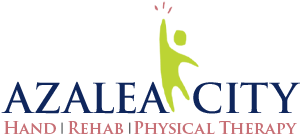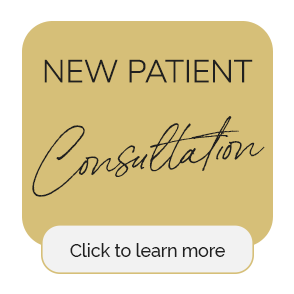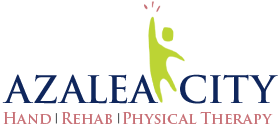Disc Herniation Relief Through Physical Therapy/Occupational Therapy in Mobile AL

Dealing with disc herniation in Mobile AL can feel like an uphill battle-one moment you're fine, and the next, you might experience sudden back pain that radiates into your legs or arms. While this condition is common, it can be incredibly disruptive to your everyday life. Fortunately, physical therapy/occupational therapy offers a non-invasive and highly effective solution to alleviate the pain and discomfort caused by disc herniation, helping you get back to your routine with confidence.
Azalea City Hand and Rehab and Physical Therapy has everything you need to know about disc herniation, from what it is to how physical therapy/occupational therapy can help you recover and prevent future flare-ups.
What Is Disc Herniation in Mobile AL?
To understand disc herniation, it's essential to first know a little about the spine's anatomy. Between each vertebra in your spine are small, spongy discs that act as cushions, absorbing shock and allowing your spine to move freely. These discs have a tough outer layer and a softer gel-like center.
A disc herniation occurs when the soft inner material pushes through a tear in the outer layer. This can result in the disc pressing on nearby nerves, causing pain, numbness, or weakness in different parts of the body, depending on the location of the herniation.
Symptoms of Disc Herniation in Mobile AL
The symptoms of a disc herniation can vary significantly depending on the disc's location and whether it presses on a nerve. Some people experience intense pain, while others may have little to no symptoms at all. Here are some of the most common signs that you might have a herniated disc:
- Back or Neck Pain: Depending on where the herniation occurs (lumbar spine for lower back, cervical spine for neck), you may feel localized pain.
Pain Radiating Down the Legs or Arms: If the herniated disc is compressing a nerve, the pain might travel along the path of the nerve, causing shooting pain down your legs (sciatica) or into your arms. - Numbness or Tingling: Many people report a sensation of pins and needles in the affected area.
- Muscle Weakness: In some cases, nerve compression can cause muscles to weaken, making it difficult to lift objects or maintain a firm grip.
- Worsened Pain When Moving: Activities like bending, lifting, or even coughing can exacerbate the pain if they increase pressure on the affected nerve.
It's important to note that while back or neck pain is common, not every case of back pain indicates a herniated disc. However, if you're experiencing any of these symptoms, it may be time to seek professional help.
What Causes Disc Herniation?
Disc herniation can occur for several reasons, many of which are related to aging or lifestyle factors. Here are the most common causes:
- Wear and Tear (Degeneration): As we age, the spinal discs naturally lose some of their water content, making them less flexible and more prone to tears or ruptures. This process, known as disc degeneration, is one of the most common causes of disc herniation.
- Injury or Trauma: A sudden impact, fall, or improper lifting technique can cause a disc to herniate. Repeated strain from heavy lifting or twisting movements can also contribute to disc injuries.
- Poor Posture and Prolonged Sitting: Sitting for extended periods, especially with poor posture, can increase the pressure on your spine and contribute to disc degeneration or herniation over time.
- Genetics: Some individuals may be genetically predisposed to developing herniated discs, particularly if there's a family history of back issues.
- Obesity: Carrying extra weight puts added stress on the spine, which can lead to disc herniation.
- Smoking: Smoking can reduce oxygen supply to the discs, causing them to break down more quickly and increasing the risk of herniation.
Understanding the cause of your disc herniation is key to developing an effective treatment plan, and this is where proper diagnosis comes into play.
How Is Disc Herniation Diagnosed?
If you suspect you have a herniated disc, the first step is to get a proper diagnosis. Your healthcare provider will likely start with a physical examination and ask about your symptoms, including where the pain is located and what activities make it worse.
Here are some common diagnostic tools and methods used to identify disc herniation:
- Physical Examination: Your doctor or physical therapist will assess your reflexes, muscle strength, and ability to move in certain ways to identify potential nerve involvement.
- Imaging Tests: If needed, your healthcare provider may order an MRI (Magnetic Resonance Imaging) or CT scan to get a detailed view of your spine. These imaging tests can show the location of the herniated disc and whether it's pressing on any nerves.
- Nerve Tests: In some cases, a nerve conduction study or electromyography (EMG) might be used to determine if nerve signals are being affected by the herniation.
Once a disc herniation is confirmed, you can begin exploring treatment options, with physical therapy/occupational therapy often being a key component of a successful recovery plan.
How Physical Therapy/Occupational Therapy Helps People with Disc Herniation
Physical therapy/occupational therapy is a highly effective, non-invasive treatment for people suffering from disc herniation. It works by addressing the root causes of your pain, improving your mobility, and preventing future injuries. Here's how physical therapy/occupational therapy can help:
1. Pain Management
One of the first goals of physical therapy/occupational therapy is to reduce your pain. Your therapist may use techniques such as:
- Manual Therapy: This involves hands-on manipulation of the muscles and joints to relieve tension and improve blood flow to the affected area.
- Heat and Cold Therapy: Applying heat or cold packs can help reduce inflammation and provide immediate pain relief.
- Electrical Stimulation: This technique uses mild electrical currents to target muscles and nerves, helping to reduce pain and improve function.
2. Strengthening and Stretching Exercises
A crucial part of physical therapy/occupational therapy for disc herniation involves strengthening the muscles that support your spine and stretching the muscles that may be tight or weak.
- Core Strengthening: A strong core is essential for supporting your spine and preventing further injury. Your therapist will guide you through exercises that build core stability, which takes pressure off your spine.
- Flexibility and Stretching: Tight muscles, particularly in the hamstrings and hips, can exacerbate disc herniation. Stretching exercises help to increase flexibility and relieve tension on your spine.
3. Posture and Body Mechanics
Poor posture and improper lifting techniques are common contributors to disc herniation. Physical therapy/occupational therapy includes education on proper body mechanics to ensure you move in ways that protect your spine.
- Posture Correction: Your therapist will teach you how to maintain proper posture while sitting, standing, and walking, which can relieve pressure on the discs.
- Ergonomic Adjustments: They may also suggest changes to your workspace, such as adjusting your chair or desk height, to support good posture throughout the day.
4. Preventing Future Injuries
In addition to helping you recover from your current disc herniation, physical therapy/occupational therapy is focused on preventing future episodes. Your therapist will provide you with exercises and strategies to maintain a healthy spine and avoid putting undue stress on your back.
What Should You Do If You Think You Have a Disc Herniation?
If you're experiencing symptoms that suggest a disc herniation, it's important to act quickly to prevent the problem from worsening. Here's what you should do:
- Consult a Healthcare Professional: Seek out a doctor or physical therapist for an accurate diagnosis. They can help determine if your symptoms are due to disc herniation or another condition.
- Avoid Strenuous Activities: Until you have a clear diagnosis, avoid heavy lifting or activities that could worsen your symptoms.
- Start Physical Therapy/Occupational Therapy: If diagnosed with a disc herniation, physical therapy/occupational therapy is often one of the first treatments recommended. Starting therapy early can help you manage pain and prevent further damage.
Take Control of Your Disc Herniation with Physical Therapy/Occupational Therapy
Disc herniation can be a painful and debilitating condition, but it's not something you have to live with forever. Physical therapy/occupational therapy provides a safe, effective way to manage the pain, restore function, and prevent future problems. If you suspect you have a herniated disc, don't wait-seek professional help and begin your journey to recovery with a customized physical therapy/occupational therapy plan.
Take the first step today by scheduling a consultation with a qualified physical therapist who can guide you through the process of healing and help you regain control of your life.
OFFICE HOURS
Monday
8:00am - 5:00pm
Tuesday
8:00am - 5:00pm
Wednesday
8:00am - 5:00pm
Thursday
8:00am - 5:00pm
Friday
8:00am - 12:00pm
Saturday & Sunday
Closed
Azalea City Hand and Rehab and Physical Therapy
316 S Sage Ave Ste C
Mobile, AL 36606


